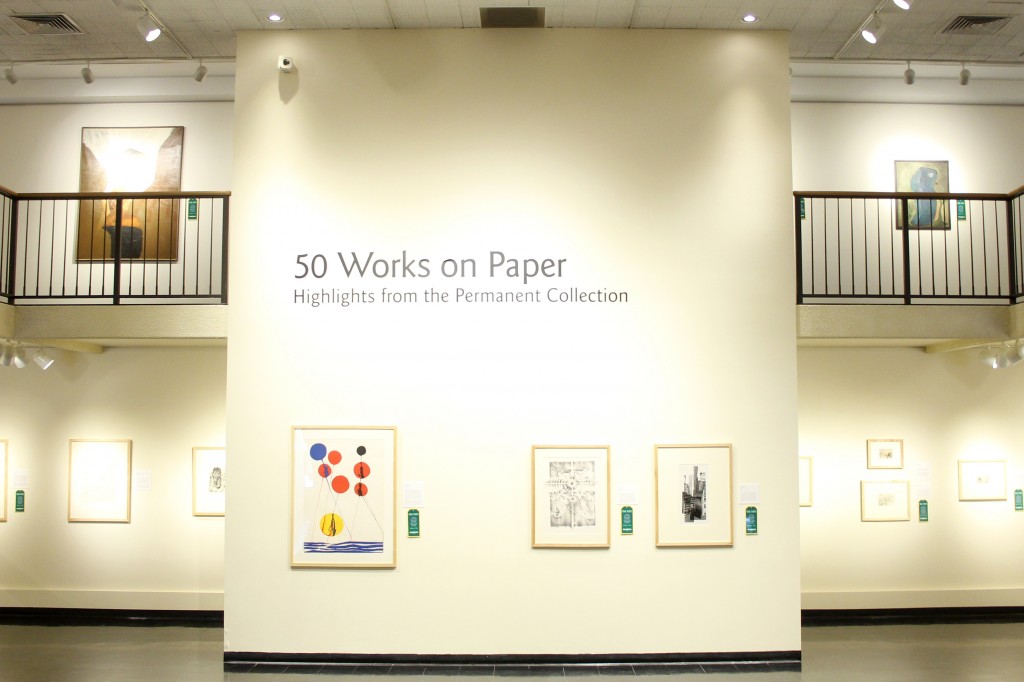
Rembrandt, Dali and Dürer are all artists whose works an observer might see at the Louvre or the Met, but visitors might be surprised to see them at Binghamton University as well.
From the Binghamton University Art Museum’s collection of over 3,000 works available at the archives, museum administrators launched a display of 50 paper prints from the 1500s to 1900s.
“Roughly one-third of the permanent collection is on paper,” said Diane Butler, director of the Art Museum. “When we launched the ‘50 Works on Paper,’ we wanted to show our highlights.”
From now until March 5, the Art Museum has planned to display paper prints and drawings along its main gallery as a special exhibition.
While many of the pieces are mass-produced prints, some of the displayed works had personal touches from the artist and are limited in quantity.
“We have modern prints,” said Butler, in reference to a print from Salvador Dali. “But this is personally colored, and as you can see, signed by Dali.”
Butler said there were different styles of copying and printing on display, as well as one-of-a-kind drawings.
“Some drawings are preparatory drawings, and others are finished,” she said. “But these are unique, all drawings are unique.”
For preservation reasons, most of the paper works could not be regularly displayed. But for this temporary exhibition fundraiser, Butler, who took over the director role in 2012, said she wanted to make an exception.
“I saw the need to raise more money,” she said. “Most of these pieces have been stored in big drawers and as we get these pieces matted, it’s become very crowded.”
Butler said the need to preserve the pieces was at a critical point.
“At the time these were printed, people would literally paste them to walls,” she said. “But as these are works on paper, they are very delicate.”
Donors can officially sponsor a drawing or print with a $500 donation to the museum.
According to Butler, 30 out of 50 pieces have been sponsored. The museum has raised more than $15,000. Butler said she would like to see each piece sponsored, bringing in $25,000 for the museum.
“Our goal was to reach the halfway point by the time we opened and we did that,” she said. “$500 is a modest cost to help preserve this artwork.”
Many students expressed interest in the exhibition, even if most could not afford to sponsor a piece themselves.
“I didn’t know we had any work by Salvador Dali or photographs by Cindy Sherman. I’m a transfer student and at my old school we didn’t have anything like this,” said Alexis Woodbury, vice president of the Undergraduate Art History Association and a junior majoring in art history. “For a state university museum to have such incredible artists is amazing.”
While the prints and drawings will be stored in the museum vault in April, all the artwork will be available to view by request after the exhibition is over.


